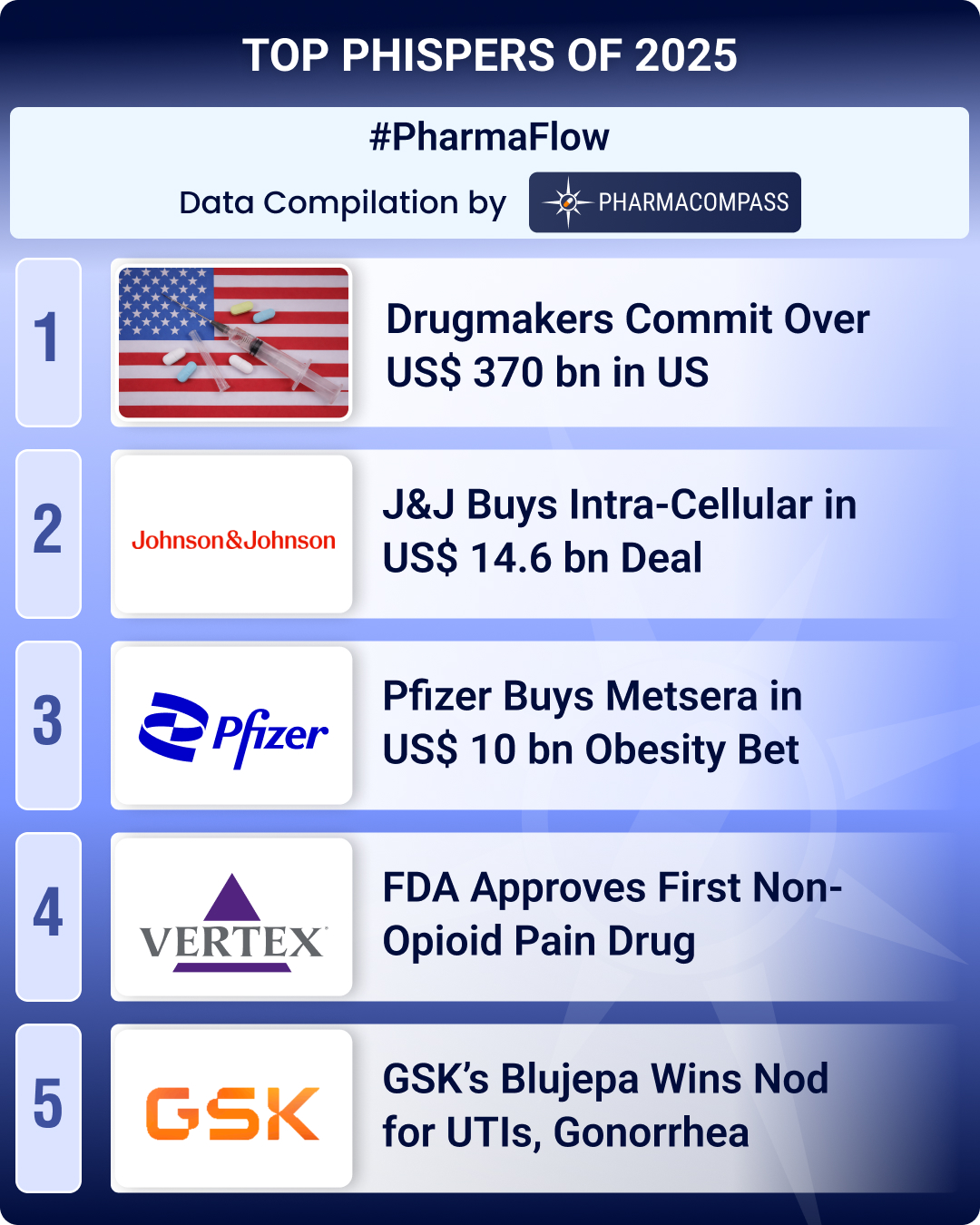Overview of suspension liquid oral dosage forms: types, formulation development, applications, benefits, evaluation, and more on the excipients used, pharmaceutical technologies enabling oral drug delivery, primary packaging considerations, & liquid stick packs and single dose sachets.
Q1. What are the different types of liquid oral dosage forms?
Dosage forms are the means by which drug molecules are delivered to suitable sites of action within the body. They are classified according to their routes of administration into oral, topical, rectal, parenteral, ophthalmic, etc. and according to their physical form into solids, semisolids, and liquids. Among the various administration routes, oral dosage forms are usually the most convenient choice, their advantages include safety, good patient compliance, ease of ingestion, pain avoidance, and versatility to accommodate various types of drugs.
Oral pharmaceuticals are largely divided into solid and liquid oral dosage forms. While oral solids include tablets, effervescent tablets, capsules, solid & liquid sachets, powders, granules, orally dispersible films, etc. Liquid oral dosage forms and semi solids are available as syrups, solutions, suspensions, dispersions, semi-solids, softgels, etc. Liquid dosage forms are prepared by dissolving active pharmaceutical ingredients (API) in aqueous and nonaqueous solvents, suspending the API in appropriate mediums, or by incorporating the drug substances into oil or water phases. Various CDMOs are involved in the development of ready to use oral dosage forms including suspensions.
Linctuses, drops, gargles, mouth washes, & throat paints are some of the other oral liquid dosage forms available in the pharmaceutical industry. Liquid dosage forms offer certain benefits over other specialist dosage forms such as ease of swallowing, faster absorption, and more flexibility in dosing, however, they are more difficult to administer, harder to measure accurately, and have shorter lifespans as compared to other oral dosage forms.
Among solid and liquid oral dosage forms, pharmaceutical suspensions are the most widely used pediatric formulations. Besides oral drug delivery, liquids are also used for otic, dermal, parenteral, and optic drug delivery. When developing liquid forms, consideration is first given to the characteristics of the active drug. The major challenges in oral formulation development & manufacturing of liquid dosage forms are (i) the stability of a drug in a solution, (ii) the solubility of a drug at the required level, and (iii) acceptable taste.
Types of Liquid Dosage Forms for Oral Drug Delivery:
Syrups: They are viscous oral solutions that contain one or more active ingredients. The base contains large amounts of sugar such as sucrose or sorbitol, which can inhibit crystallization, or change the taste, base properties and/or modify solubilization.
Solutions: Oral solutions are clear liquid preparations for oral use containing one or more active pharmaceutical ingredients (API) dissolved in a suitable medium.
Elixirs: They are clear, sweetened hydro-alcoholic solutions intended for oral use and are usually flavored to enhance palatability. They are not as sweet syrups and are significantly less viscous than them.
Suspensions: In the development of ready to use oral dosage forms, Suspension is widely used liquid dosage form.They may be defined as preparations containing finely divided drug particles distributed somewhat uniformly throughout a medium in which the drug exhibits a minimum degree of solubility.
Q2. What is a pharmaceutical suspension and what are the benefits?
Pharmaceutical suspensions are dispersions of insoluble solid particles in a liquid medium (suspension vehicle). They are biphasic liquid dosage forms; the internal part consists of particulates that are essentially insoluble but uniformly dispersed through the continuous phase with the aid of a suspending agent and the external phase is generally aqueous, but may be an organic or oily liquid for parenteral drug delivery.
Ideally, the pH at which a drug is most stable would also be close enough to its solubility for delivering the desired dose in approximately 5 mL. Requiring patients to take more than 10 mL at a time may not be advisable because of lower patient compliance. In this scenario, oral formulation development for solution or syrup may be employed. However, if the pH at which a drug is most stable is not one at which there is enough solubility, a suspension formulation development may be required. The suspended particle diameter in the liquid oral dosage form development usually ranges between 0.5 µm to 5.0 µm.
In the development of ready to use oral dosage forms, pharmaceutical suspensions are mostly utilized to achieve oral, parenteral, and external drug administration and are relatively more stable than solutions. Depending on the size of the suspended particles, suspensions are divided into two types; coarse suspensions and colloidal suspensions.
• Coarse suspensions are heterogeneous dispersed systems, in which the particles are larger than 1 µm. Coarse dispersions are characterized by relatively fast sedimentation of the dispersed phase caused by gravity or other forces.
• A colloid is a heterogeneous mixture whose particle sizes are intermediate to those of suspensions and solutions. The size of the dispersed particles in colloidal suspensions do not exceed 1 µm.
Advantages of Suspensions:
- Effective dispensing of hydrophobic drugs
- Avoidance of the use of cosolvents
- Taste masking of bitter drugs
- Achieve controlled/sustained drug release
- Offering resistance to degradation of drugs due to hydrolysis, oxidation or microbial activity
- Efficient intramuscular depot therapy.
- Higher rate of bioavailability: Solutions > Suspensions > Capsules > Compressed tablets
- Easy swallowing for young or elderly patients
In case of pediatric formulations, oral dosage forms are divided into two main product categories:
(1) A ready to use oral dosage forms such as a tablets,effervescent tablets, syrups, solutions, or suspensions
(2) A formulation that requires manipulation such as a powder for constitution to a suspension or solution, effervescent tablets, dispersible tablets, bulk oral granules or powder to be dusted on food, and sprinkle capsules filled with pellets, granules, or mini tablets to mix with food or drinks.
Pharmaceutical suspensions are ready to use oral dosage forms that have been used for decades as the preferred dosage form for oral drug delivery to children. Although solid oral dosage form development includes the development of orally disintegrating tablets and dispersible tablets have some advantages as pediatric formulations in terms of stability, oral liquids as specialist dosage forms provide the clear advantage of flexible dosing, which is particularly important for highly active compounds with a narrow therapeutic window.
The major challenges in the development of ready to use oral dosage forms are (i) the stability of a drug in a solution, (ii) the solubility of a drug at the required level, and (iii) acceptable taste. The disadvantages of oral suspensions is that its high viscosity retards drug absorption, hinders the re-dispersibility of sediments, and creates problems in handling materials during bulk manufacturing.
Q3. What does the formulation development of oral suspension entail?
Suspension Oral Formulation Development:
A good understanding of the fundamentals of dispersion systems is essential for the pharmaceutical development of suspension dosage forms. Various CDMOs carry out the following steps for oral formulation development of suspensions:
1. Selecting compatible excipients: Excipient selection is one of the most important steps in oral suspension formulation development & manufacturing.
2. Regulating particle size distribution: The particle size distribution in suspension formulation development is a critical parameter that significantly impacts the bioavailability and pharmacokinetics of the product.
3. Analytical development: Analytical development services include the tests and instruments which are used to classify and characterize a suspension formulation.
4. Scale up: Scale up is generally defined as the process of increasing batch sizes. In suspension scale-up, a formula is transformed into a viable, robust product by the development of reliable and practical methods of manufacturing that affect the orderly transition from laboratory to full-scale production. It must include a close examination of the formula to determine its ability to withstand an aggregation of batch-scale and process modification concerns.
5. Regulatory compliance: All of this formulation design & development work should ultimately culminate into a regulatory filing in accordance with regulatory guidelines for the suspension dosage form.
Q4. What are the different aspects of suspension formulations and how are they evaluated?
Suspension dosage forms are evaluated by determining their physical stability by assessing sedimentation rates, viscosity, and other aspects of suspension formulation development products via the following methods, amongst others:
Sedimentation Method: The sedimentation of particles in suspensions is governed by particle size, density, and velocity of the medium. Sedimentation of suspensions are generally assessed by a jar test, during which a suspension is allowed to settle and the height of the clear liquid (supernatant)-suspension interface is measured as a function of the settling time.
Rheological Method: Rheology is defined as the study of flow behavior. It is normally applied to fluid materials. Flow is typically measured using shear and the shear parameters of stress and strain rate are calculated from measurements of torque and flow rate. The rheological method of testing suspensions uses a viscometer to test the viscosity of suspensions at different time intervals.
Electrokinetic Method: The surface electric charge of suspensions is determined by the electrophoretic method, this calculation imparts knowledge about the stability of a suspension.
Micromeritic Method: Changes in particle size and shape affect the stability of a suspension such as increases in particle size leading to caking and clumping. Changes in particle characteristics and crystal habits can be assessed via microscopy and the coulter counter method.
Q5. What are the excipients used in the formulation development of oral suspensions?
Some knowledge of a drug's physical and chemical characteristics such as the solubility, pH stability, sedimentation rate, and pKa value(s) of reactive functional groups is essential in order to choose the proper excipients for suspension dosage types effectively. Various excipients used in the formulation design & development of liquid oral suspensions are enumerated below:
- Suspending Agents/Thickening Agents
A suspending agent is a liquid in which a solid substance can be held in a pharmaceutical suspension. The drug is held in the suspension by a suspending agent, and does not settle at the bottom. Suspending agents are also called thickening agents and help in lowering the sedimentation rate of particles in a suspension.
- Solvents/Co-solvents
Typically, when water-miscible cosolvents are used in combination, the effect is additive (assuming the cosolvents do not interact with each other), and the solubility of the drug is greater than in either of the individual cosolvents alone.
- Flocculating Agents
In flocculated systems of suspensions, individual particles form loose aggregates with each other & create network-like structure in suspension vehicles. The rate of sedimentation is high and the sediment is loosely packed. When shaken it can redisperse in suspension vehicle and reform the original suspension state easily.
- External Liquid Vehicles
They are added to construct the structures of the final suspension.
- Solubilizers
In aqueous-based solutions, solubilizers are used to modify the polarity of water to allow an increase in the solubility of a nonpolar drug. Some typical excipients used as solubilizers in oral liquid dosage forms and paediatric formulations are propylene glycol, alcohols such as ethanol, sugars such as sorbitol, or polyethylene glycols such as PEG-400.
- Wetting Agents
They are added to disperse oral solids in the continuous liquid phase.
- Preservative
Preservatives are the chemical substances used to improve or amplify the shelf life of drugs by decreasing or lowering the oxidation of active pharmaceutical ingredients (API) and excipients and by reducing microbial production.
- Sweetening Agents
A sweetening agent can play a number of important roles in solid and liquid oral dosage forms such as enhancing flavor, taste masking bitterness, and/or increasing viscosity.
- Flavoring Agents
Flavoring agents are used in pharmaceutical formulation development to achieve taste masking of bitter drugs & to make them more suitable, acceptable for ingestion.
- Coloring Agents
Colorants or coloring agents are mainly used in the pharmaceutical industry to impart distinctive appearances to pharmaceutical dosage forms, thereby enhancing their aesthetic appearances.
- Osmotic Agents
They are added to adjust osmotic pressure comparable to biological fluid.
- Buffering Agents
Buffers are necessary to adjust and maintain the pH. Buffering agents can be salts of weak acids and weak bases. Examples are carbonates, bicarbonates, and hydrogen phosphates.
Q6. What are the primary packaging considerations to keep in mind when developing an oral suspension?
The selection of suitable pharmaceutical packaging material depends upon several factors which include type of dosage form, route of administration, chemical nature of the active pharmaceutical ingredients, and excipients used in the formulations. The pharmaceutical packaging presentation of liquid oral suspensions is a critical step in maintaining chemical and physical stability, compliance, adherence, and proper handling by the target patient population, caregivers, and health-care professionals.
Some of the problems in the packaging of oral liquid dosage forms in the past, have included potency of unit dose packages and accurate calibration of measuring devices such as droppers that are often provided. Another problem in the packaging of liquid dosage forms is the lack of cleanliness of containers prior to filling. Nowadays, apart from the general considerations of packaging, environmental friendliness of pharmaceutical packaging is of great use with respect to a pollution free environment, biodegradability, reusability, and quality.
Therefore, uniformity of suspensions, testing of unit dose packaged samples, reusability, and cleanliness of containers are some of the leading considerations to keep in mind when it comes to the pharmaceutical packaging of ready to use oral suspension dosage forms.
As per the above given considerations, glass, plastic and metal are the most widely used materials and bottles, sachets and stick packs are the most commonly used configurations, for packaging oral pharmaceutical suspensions. Non-sterile liquid forms are also packaged in liquid stick packs, liquid sachets or single-dose vials. Non-sterile liquid forms are stored in plastic bottles with aluminum caps, in plastic bottles with spray/pump/foam nozzles, and in stickpacks and sachets made from aluminium complexes.
Furthermore, bottles, liquid sachets and stick packs are common packaging presentations for oral dosage form development including oral liquids for pediatric formulations. Active ingredients with high aqueous solubility can be presented in a bottle for multiple use products and a stick pack, packet, or liquid sachet for single-use. They are also used in the development of ready to use oral dosage forms.
- Bottles
1. Sprays, Pumps, Foams, Etc.
- Glass/plastic bottles, aluminium caps or plastic stoppers. In oral dosage form development and manufacturing , there are various applications of bottles as pharmaceutical packaging material which are as follows: Cough Syrups, Vitamins, Gastroenterology, Analgesics, Liquid Rx Products, etc.
- Sachets
Single Dose Sachets: Practical single dose sachets are sealed plastic or paper bags, containing unit dose quantities of medical drug products. They may be heat sealed, in which a heat-seal layer is designed to bond to itself when heat is applied during the forming process. In addition to the heat seal layer, a barrier layer is commonly included to provide protection from the external environment. Aluminum foil is considered to be the most protective against gas and moisture ingress as well as protection from light transmission.
Alternate materials may be used as barrier layers depending on the product requirements. Practical single dose sachets or unit dose packagings have many advantages over traditional packaging; single dose sachets besides the practicality of reduced size, make it possible to avoid losing any product excess, retain their fragrance until the moment of use, are comfortable to carry during the day, and are essential in the pharmaceutical packaging industry.
- Stick Packs
CDMO Liquid Stick Packs: In oral dosage form development and manufacturing, Liquid stick-packs for oral liquids and suspensions appeal to consumers with modern and active lifestyles. Liquid stick packaging further promotes accurate dosing and patient compliance, ideal for pediatric formulations and geriatric applications. CDMO Liquid stick packs are the new trend in the packaging of ready to use single unit dosage forms. that are ideal for small and medium doses (filling quantity 10 to 15 ml)
Powder Stick Packs: Powder stick-pack forms contain dry powder suspensions for oral use. Powder stickpacks serve as alternatives to drugs in capsules, tablets and sachets. Powder stick packs are easy for patients to carry and use and can be taken directly or can be diluted in food or drinks. Furthermore, powder sticks packs act as novel substitutes for patients with swallowing difficulties. Along with stick packs, sachet presentations are also suitable for dry powder suspension intended for constitution into separate containers.
Q7. What are liquid stick packs and what are the benefits they provide for oral liquids and suspensions?
Stick packs are a type of flexible pouch suitable for food, drink, and medical packaging. Stick packaging gets its name from its shape, which is long and skinny like a stick of gum. The packs themselves are sealed on two shorts ends and have a seal down the back. They are a specific form of vertical fill, form and seal (VFFS) pouching. Stick packs can be emptied almost completely, easily consumed and transported, and are eco-friendly making this type of packaging increasingly popular with consumers. They require 10 % – 40 % less packaging material than equivalent rectangular or square pouches.
The above given qualities make liquid stick packs ideal for geriatric, pediatric formulations, and specialist dosage forms for sportsmen and women. CDMO Liquid stick packs are the new trend in single-dose products and pharmaceutical development of suspension dosage forms that are ideal for small and medium doses (filling quantity 10 to 15 ml). Stick pack contract packaging manufacturers provide a wide variety of sizes and configurations for the primary packaging of suspensions.
Generally, they take the form of a small pouch, packet, or tube made from a flexible film, so that they are easily opened, portable, and can be consumed virtually anywhere. The product is typically prepared for direct consumption and provides the complete recommended dose in a single serving. CDMO liquid stick packs are the new trend in formulation development of single dose suspension dosage forms.
Stick pack contract packaging manufacturers use stick pack packaging machines/Liquid packaging machinery which offer multi-lane packaging for all types of products, including stick pack machines with dry powder suspension and liquid suspension fillers. Liquid stick pack machine manufacturers have state-of-art stick pack machines & liquid packaging machinery which are able to package upto 20 lanes simultaneously.
The operation of liquid stick pack machines or liquid packaging machinery is very similar to that of vertical form blow fill seal packaging machines (BFS machines): a roll of film is cut and formed into multiple stick packs, the bags are filled with product and then sealed, all in a vertical fashion, at speeds of up to 80 bags per minute per lane, just like BFS machines. Stick pack contract packaging manufacturers can produce up to 1,600 stick packs per minute. With multi-lane packaging that can accommodate up to 20 lanes in a single stick pack machine
The advantages offered by liquid stick packaging in suspension formulation development include:
- Slim, Compact, & Easy Opening Pour
- No Spillage
- Unique, Eye Catching, Good for Branding
- Accurate Dosing, No wastage
- Eco Friendly
- Customization/Flexibility
All Suppliers






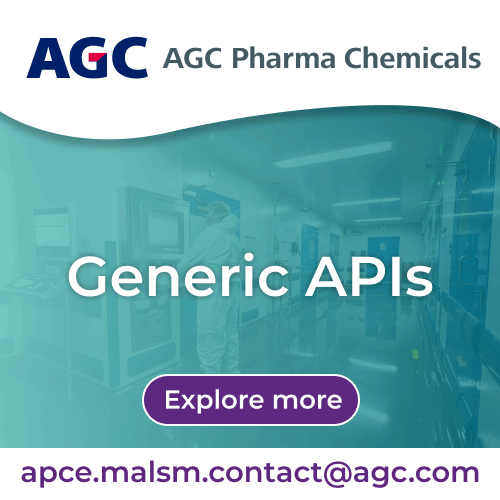
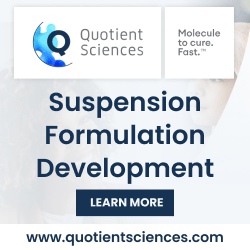
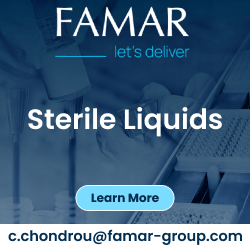
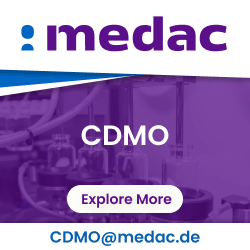






 Quotient Sciences- Molecule to Cure. Fast.
Quotient Sciences- Molecule to Cure. Fast.












